I have always liked sailing in light air. Ghosting along close to shore on a quiet evening feels like magic, especially in a small boat. But light-air sailing, though relaxing, is surprisingly challenging. In moderate winds, any boat competently handled can attain hull speed, but light wind requires sharp skills and careful attention to detail to get the most out of what’s available. Sail shape and trim make a big difference, and having a little extra canvas adds a sharp arrow to the quiver.
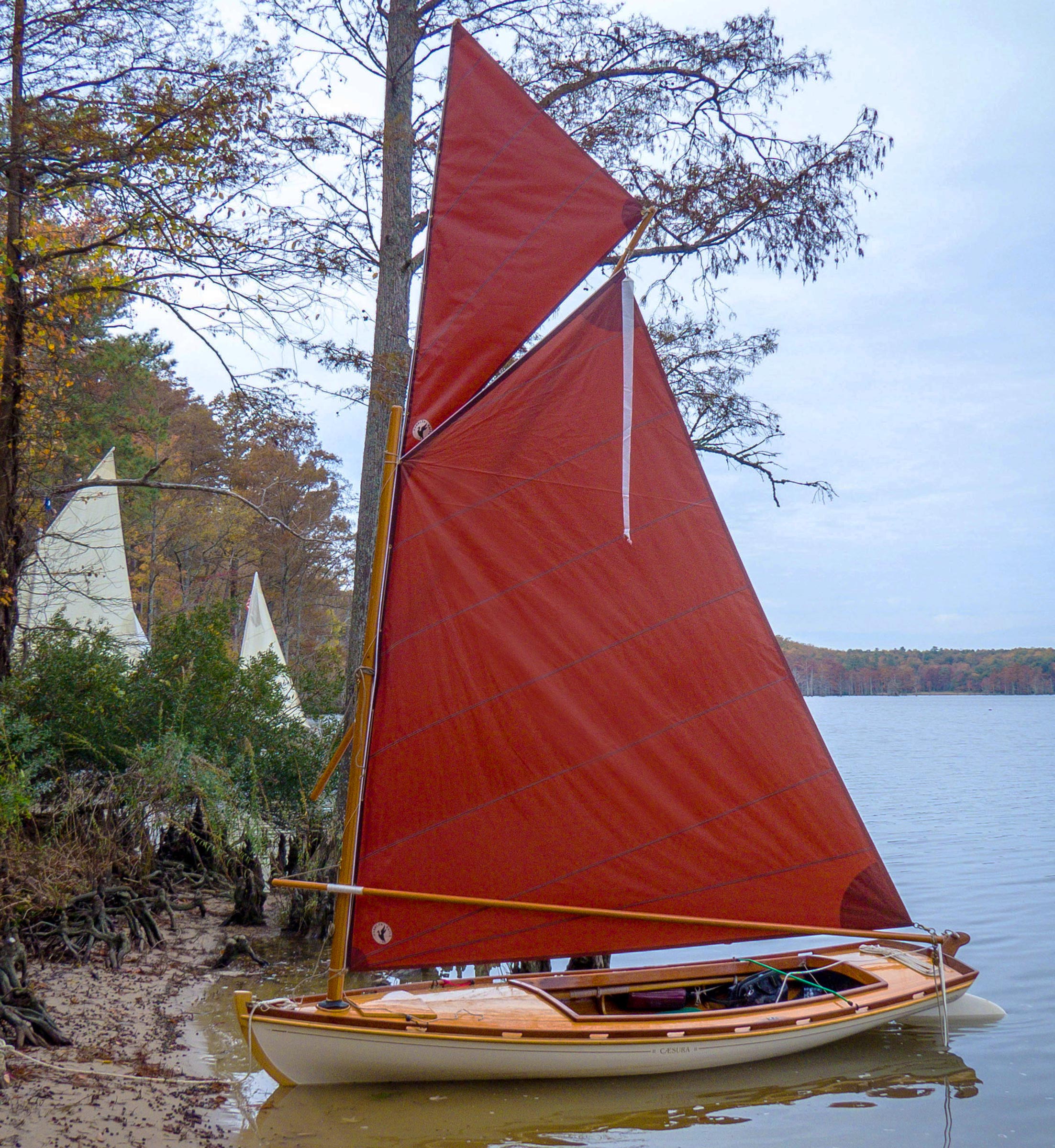 photographs by the author
photographs by the authorThe placement of a melonseed skiff’s mast so far forward rules out setting the topsail while afloat. Boats that have the mast set farther aft offer the sailer better footing and stability and may not have to be rigged while ashore.
My two melonseed skiffs, like most of their type, have small, simple rigs. The single 62-sq-ft spritsail is easy to set and moves the boat along nicely in most conditions. It takes very little to make a melonseed go, but to make things more interesting in faint wind, I tweaked the rig to accommodate a topsail. This complicates the setup, but that’s sort of the point–it offers something fun to tinker with when conditions are calm and less demanding.
When my boats were still under construction, I contacted Stuart Hopkins of Dabbler Sails with the idea of a topsail and he found the proposal intriguing. He agreed to help with design challenges and to make the sails. His suggestions were instrumental in coming up with a solution that works well.
The sails themselves are small and, according to Stuart, relatively easy to make because they require very little draft.* The difficulty is in establishing final dimensions to enable the sail to set well. The topsail needs to overlap the top of the mainsail near the mast to maintain clean airflow but requires a gap at the aft end, near the tip of the sprit, to allow room for sheeting adjustments. My original drawings did not account for either of these details. In fact, when assessing the photos of our first attempt when it was installed on the boat, Stuart decided it did not meet his exacting standards, so we made further adjustments and tried again. The second try nailed it. The topsail is permanently laced to a long, 1-1/2”-thick yard of Douglas fir, so it flies like a flag on a thin pole. On a small boat such as a melonseed, with the mast far forward, there’s no easy way to raise or douse sail while afloat, so rigging is done at the ramp before launch and the topsail is only used when conditions are mild and predictable.
The sail and yard are raised together as a unit. The halyard is lashed to the yard above its midpoint, runs through a bee hole at the top of the mast, then down to a cleat near the deck. The point on the yard where the halyard attaches can be adjusted until proper set is achieved. The foot of the yard is then lashed to the mast, which keeps the whole assembly upright.
For sheeting the topsail, a lightweight line runs from a grommet at the topsail clew, through a bee hole at the tip of the sprit, then down the length of the sprit to the mast. I tension the sheet until the sail looks right, then just tie it off to the sprit. A small cleat here would be handy.
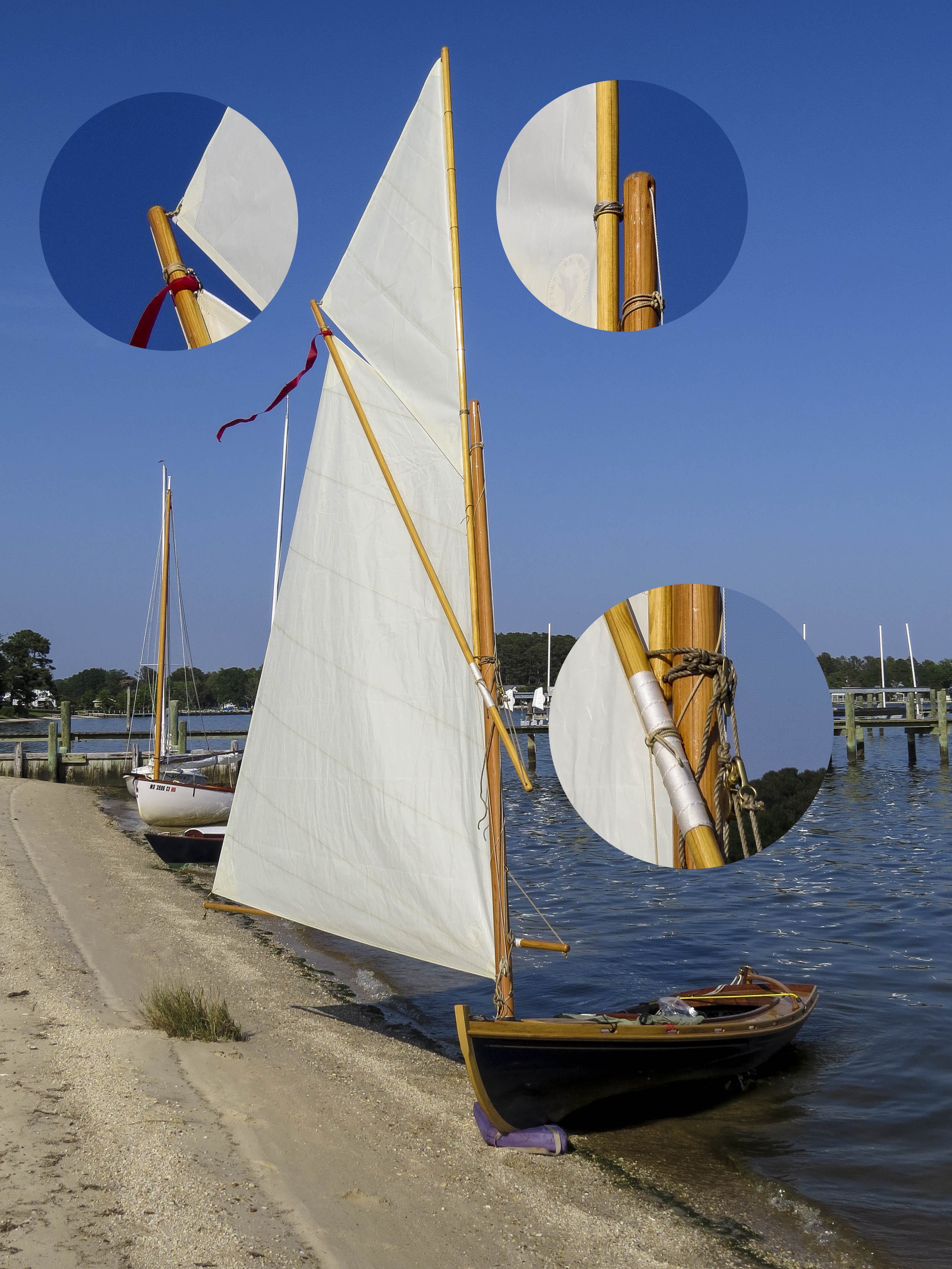
A topsail for a sprit-rigged main requires a sheet led through a beehole in the sprit (upper left inset), a halyard for the yard (upper right), and a lashing to hold the foot of the yard to the mast (lower right). The topsail sheet is tied off around the lower end of the sprit (lower right).
Getting a good set of the sail required a lot of trial and error. All the component parts of the assembly—mainsail, topsail, spars, and lines—are surprisingly interdependent. Small adjustments anywhere in the rig affect the other parts. For example, I found that tightening the snotter of the mainsail’s sprit boom is important when using the topsail, as this adds tension along the whole leech, from the top of the sprit to the mainsail’s clew. This detail helps reduce twist, which will first appear at the top of the rig. If you don’t tension the boom, the top of the sail will still flutter and luff while the bottom is sheeted in too far, which simply makes the boat heel and reduces efficiency.
The topsail only increases the sail area by about 25 percent, but it does so high on the rig where it counts most. It also extends the length of the luff, where the most power is derived when going upwind.
The actual performance enhancement is marginal, given the effort that was involved. However, when the topsail is set well it definitely improves the aesthetics, adding a nice traditional look to an already classic design. And it makes you feel like the boat is going faster, whether it is or not. Often, that’s all it takes to bring a big smile.![]()
*The Sailmaker’Apprentice recommends that a topsail be “quite flat” with only a slight curve in the luff, a slight hollow centered in the foot—about 1″ per 6′ of length—and a straight leech. For a look at another topsail, check out this month’s From the Editor—Ed.
Barry Long is a writer, photographer and media arts professional from the Chesapeake Bay region, where he sails his two of Melonseed skiffs. He keeps a blog at eyeinhand.com
You can share your tricks of the trade with other Small Boats Monthly readers by sending us an email.
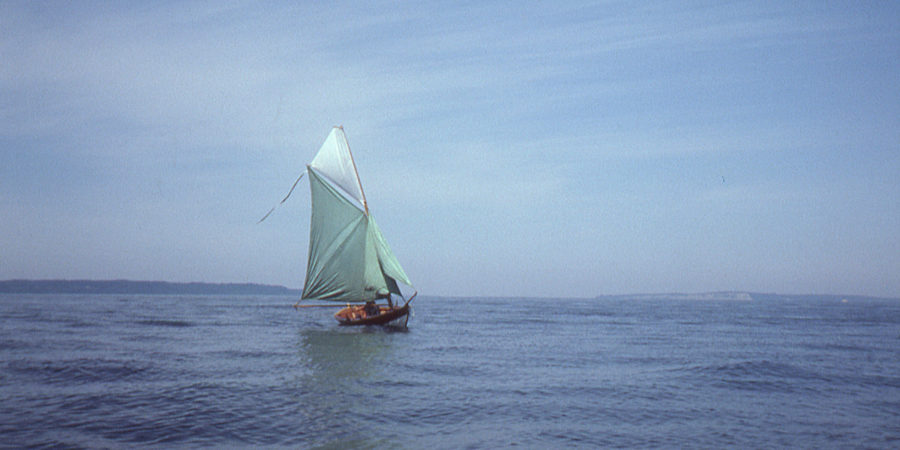
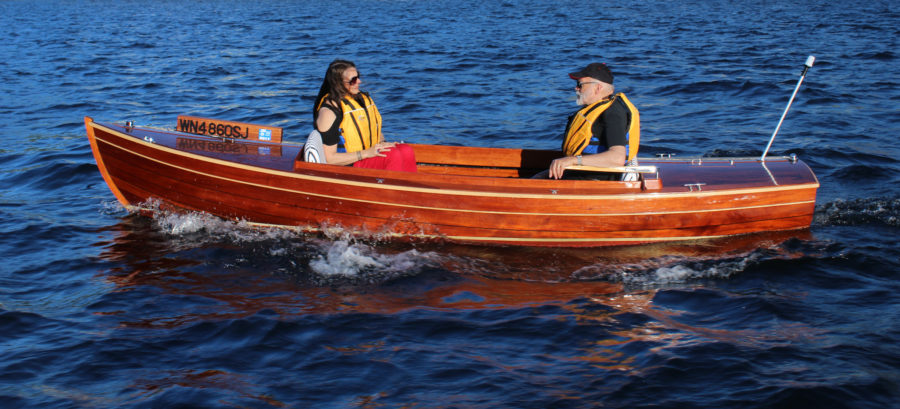
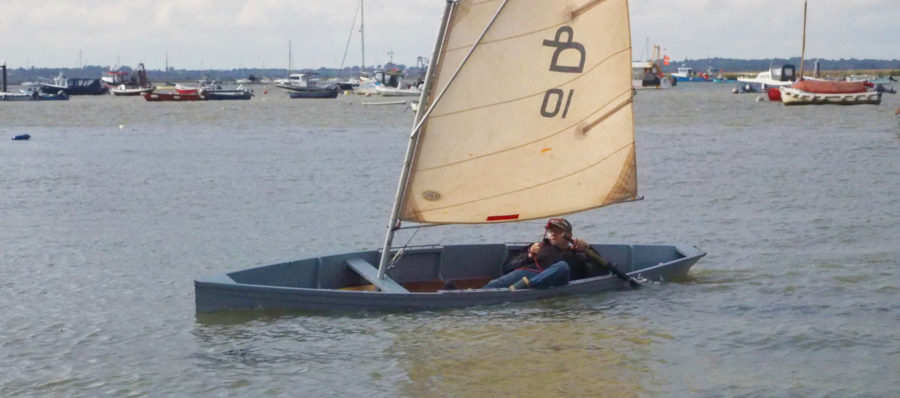
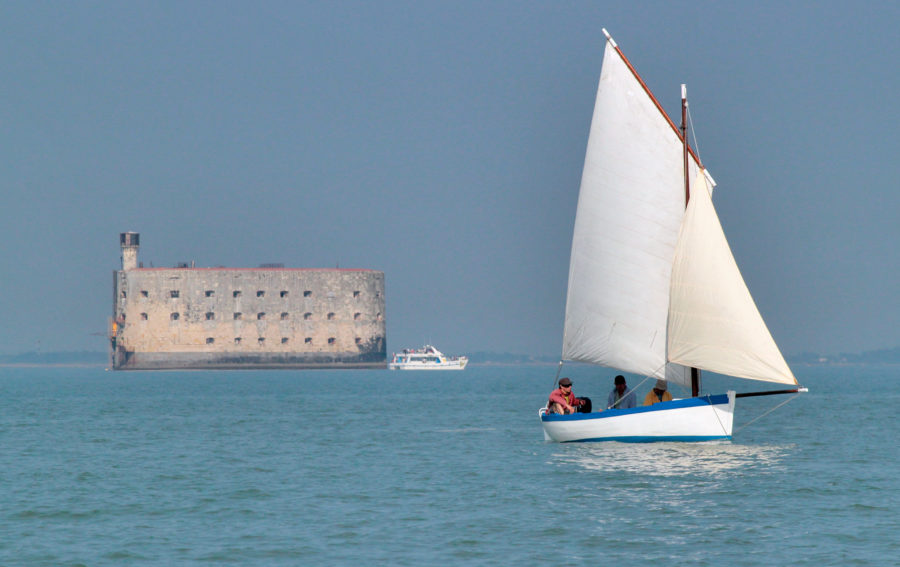
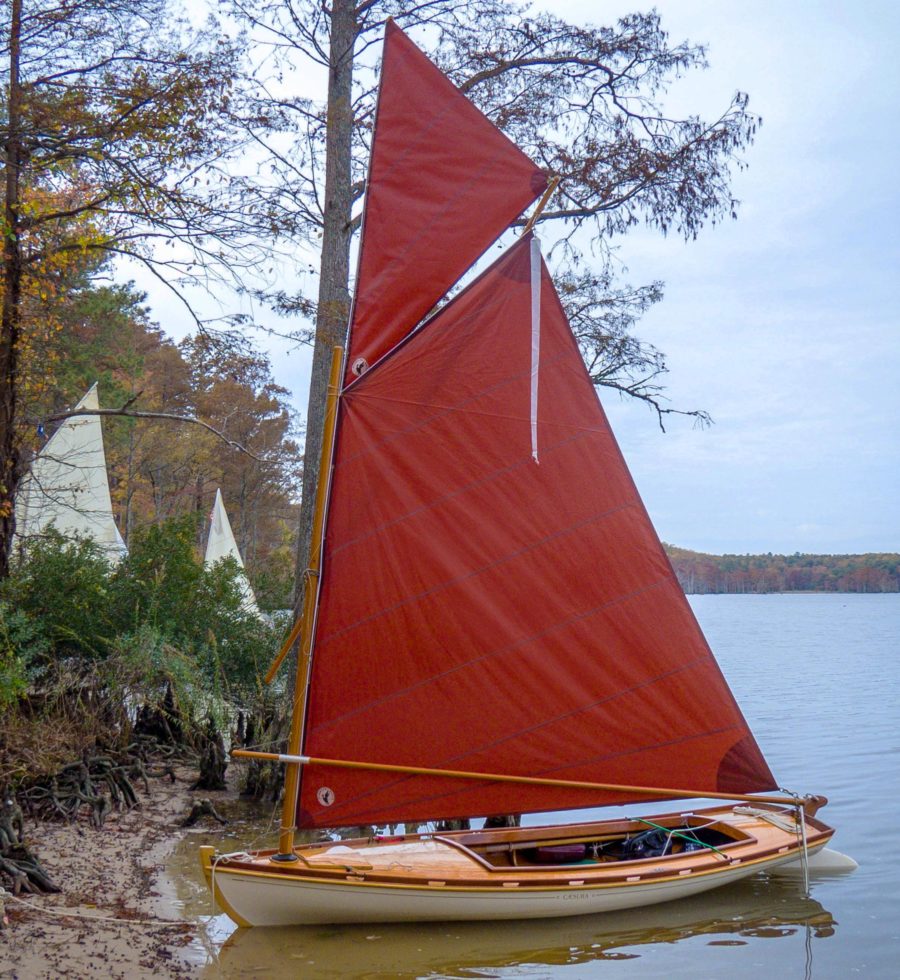
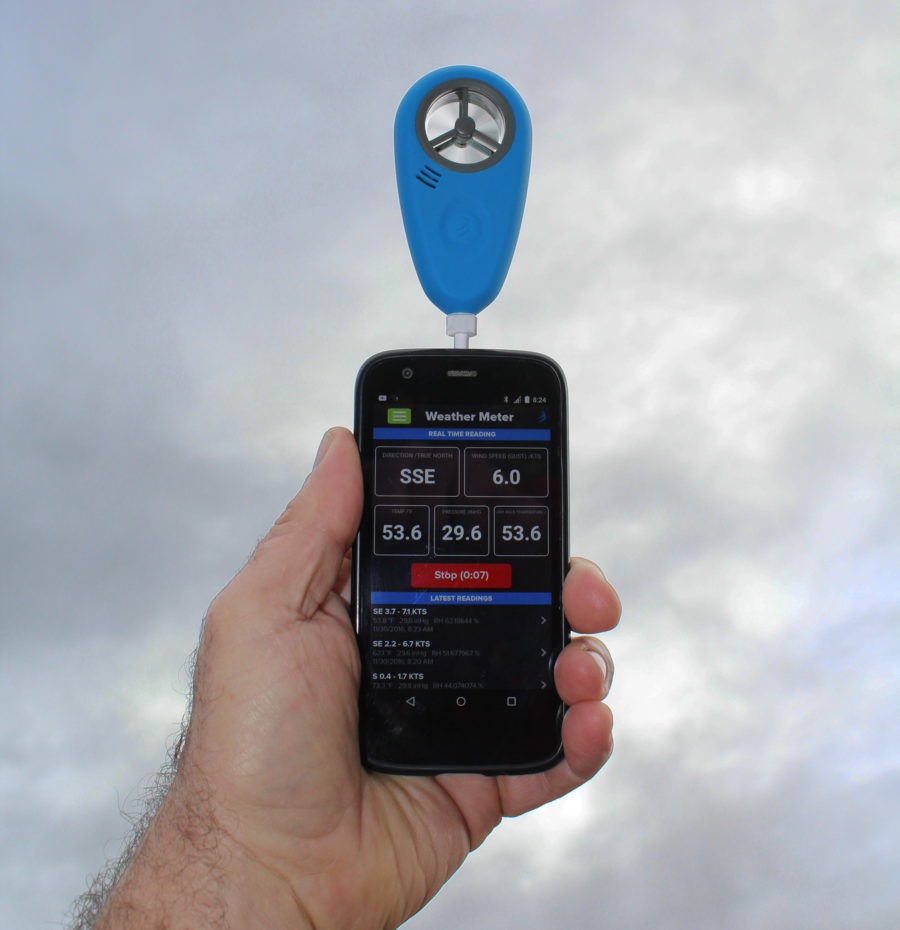
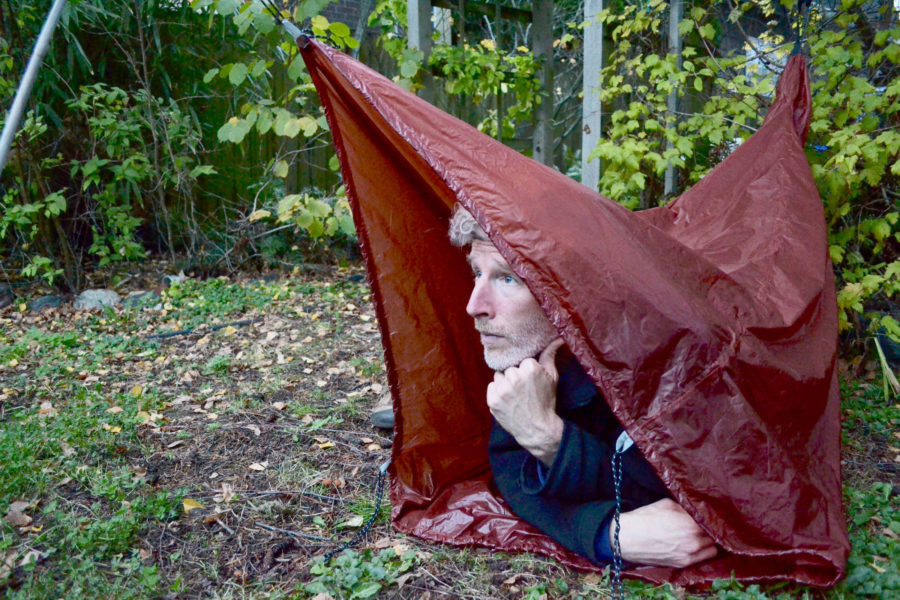
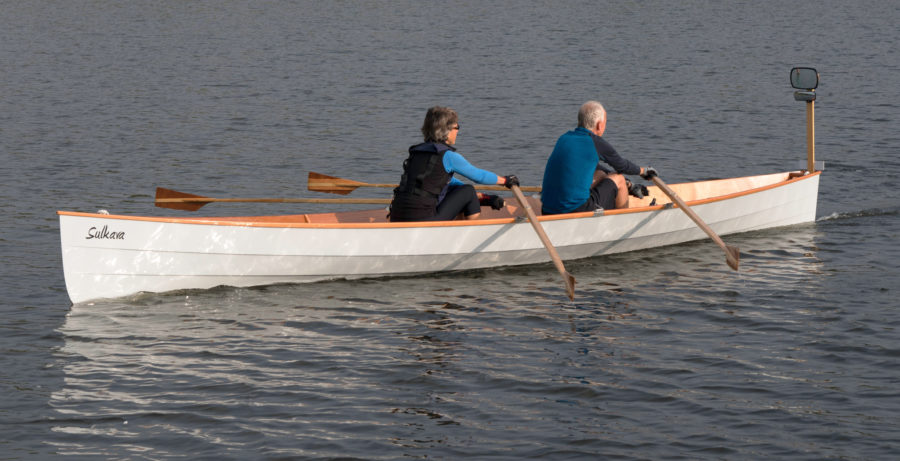
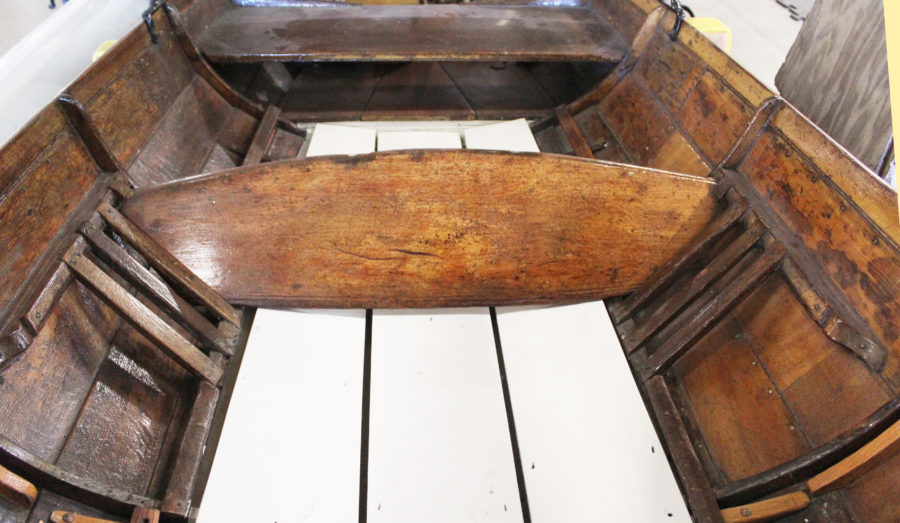
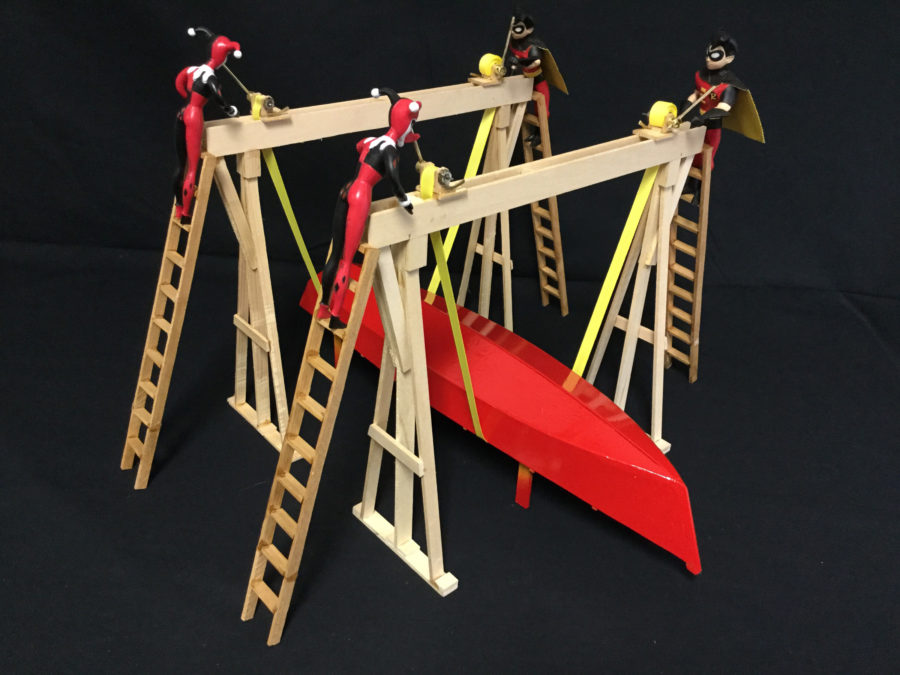
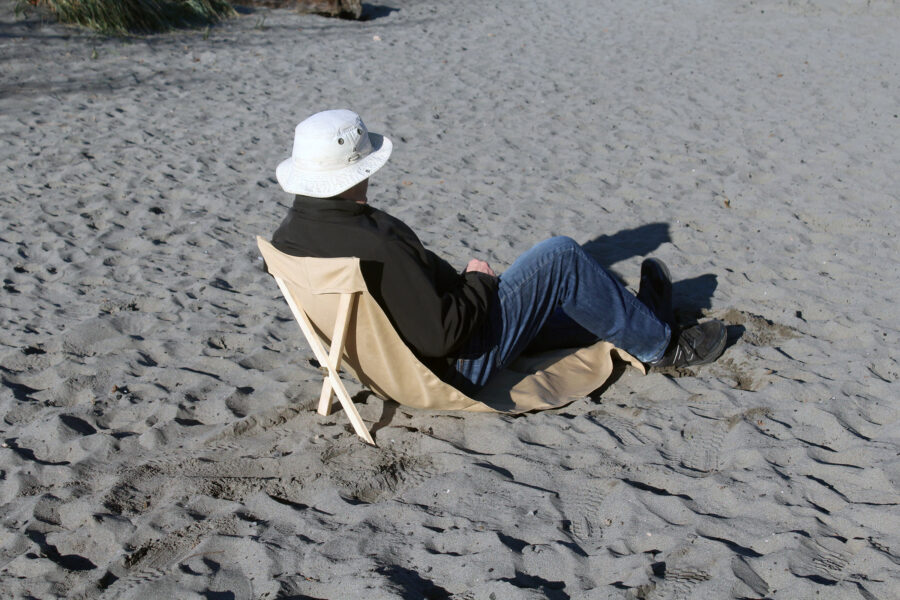
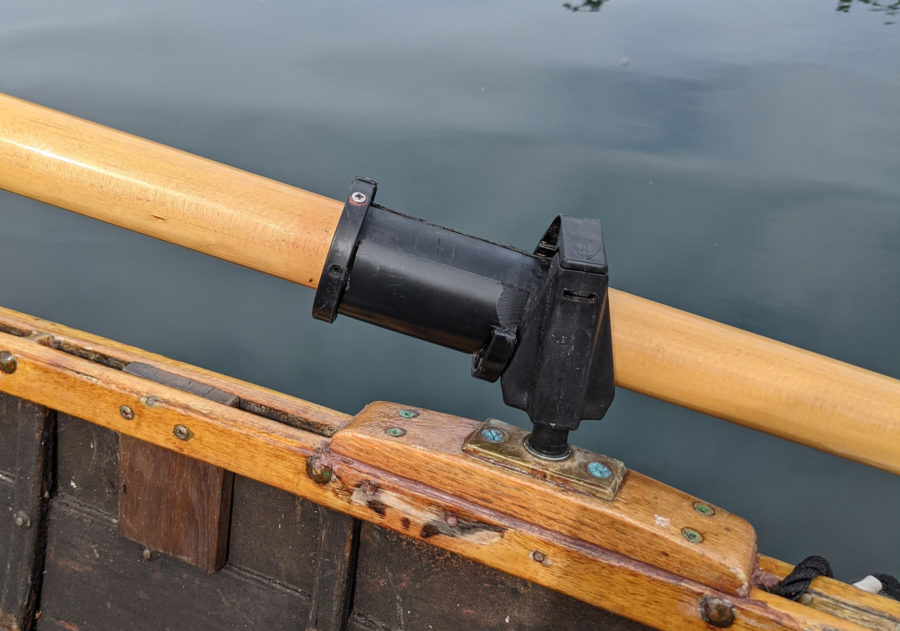
Great article and beautiful boats. I had the pleasure of sailing with Barry last year on the James River in almost dead-calm conditions. The flotilla of boats there that day lost steerage and were circling in the current due to lack of wind. Barry, with his topsail set, pulled away from the fleet and made his way up the Chickahominy River.
Beautiful sails, and beautiful boats!
First time I saw this was Barry Thomas’s son, David, who had added a topsail to his Seaford skiff (and a jib on a bowsprit). Andrew Kitchens has added one to the light home-designed flat bottom skiff he brings to the Small Reach Regatta.
Another way, possibly simpler, to rig this is the way that the Carolina spritsail skiffs do it. Their topsail is laced to a long “topmast” that has an eye on it that hooks over a bit of rod set or nailed into the mast head. The pole is long enough for you to reach up and hook it without a halyard. A downhaul keeps it vertical. There is also light boom for the bottom and a separate sheet so it can get set independently of the main. Really a mini version of a jackyard topsail.
Barry (here aboard his melonseed skiff CAESURA) simply moved as a leaf on the water ahead until he disappeared among the amber and red autumn leaves, way upstream from all of us. A magical day!
To add to Ben’s comment: Albermarle sound shadboats had a topsail also. It didn’t necessarily increase speed. They are very helpful when you sail close to a windward shore which blocks the wind. The topsail catches the higher-up wind. Shadboats often had to sail close to shore to tend their pound nets. The setup was a little different then the spritsail skiffs. The topsail mast went up by a conventional halyard. A long line was attached at the butt of the topsail mast and it had a separate sheet or, sometimes, two. So, hoist the halyard. The sail part stayed down. Then pull in on the line and cantilever up the sail. Then make fast the topsail mast to the main mast. This sounds silly but the oldtimers knew what they were doing. When the wind picked up fast they’d just take a hatchet to the halyard and makefast line. Dump the rig over the side, watch where it was drifting to and go pick it up later. When you are out fishing in the middle of winter, do what you need to do to get home.
This photo was taken of the shadboat SPIRIT OF ROANOKE ISLAND at Edenton, North Carolina, back in 2008. It was tight quarters to sail back into the dock. So I let main out completely. With no boom it ran forward and had no draft or impact on speed. I used the independent topsail just to keep way on.
This shot shows the rig. We just use one sheet for the topsail.
Hi Charlie, beautiful photos. My topsails work exactly as you describe. The halyard through the masthead cantilevers up the whole rig. And the primary value, too, but catching a little breeze up high through the trees on a windward shore. I made a trip to the Mariner’s Museum in Newport News specifically to see their shad boat.
I was in Edenton a couple of times last year, but without a way to get on the water was stuck watching from shore. I really need to get down that way with a boat. Would love to see yours sometime.
Hey Ben, it may not surprise you, but the Carolina spritsail skiffs were my initial inspiration for these topsails. I never got to study one up close, though. If I had, I would have liked the simple hook over the top attachment for the mast head you describe, and probably would have done something like that. It would be easy to change these, so I might try it. I found, however, that as downhaul at the foot of the yard was not sufficient to keep the yard upright and stiff enough to keep a good set on the sail reliably. As the line stretched under a load the yard wobbled about too much. On bigger boats you have crew who can swig it up to retighten it, as they do on gaffers and log canoes and such, I notice they all use downhauls as you describe. I couldn’t do that under way on these little boats sailing alone, though. I saw that some of the Carolina skiffs just lashed the foot of the long yard to the mast, so I followed their lead and problem solved.
Also, Harris and Kevin are being quite generous with their praise. The truth is I consistently have better views of their transoms than they have of mine.
For those interested, more photos can be found on my blog, here and here, showing the boats under sail.
I know this article has inspired me and had given me a lot of ideas on how I can spread some more canvas on my Coquina with its gaff rig. And just when I was wondering what to do with the upcoming months.
On my sprit-rigged faering, I made mast and sprit so they would both lie on the floorboards. There is a locker fore and aft, so 12′ was my maximum spar length. So my masthead is below the level of the peak. I have been toying with this sprit topsail idea and was glad to see this article come up. I think, however, I will have to go to a mizzen with boomkin rig. It will have to be removable. When I get if figured out, I will photo it in use and post an article or comment. I love these “how I did it’ articles,” for they are invaluable, not just in terms of the particular article but also in terms of idea germination.
For Michael Colfer: Try slapping together some wood laying around, cut out a poly-tarp sail, make a down-and-dirty topsail and see how it works. You can always make fancy later. As kids, we always wanted to put a jib on our old Seaford Skiff. We “borrowed” a lightning class jib. The only problem was the skiff’s mast was so short and the jib so long that we needed a 15′ bowsprit on a 13′ Seaford Skiff. It looked absolutely silly but we didn’t do too badly on a close reach. We retired the rig the next day, but we had imagination.
I use a jib-sheet track fixed halfway on the mast with a slide at the foot of my 12+feet topsail spar on my 16′ spritsail Scandinavian double ender. You lift the topsail spar with the halyard in one hand and fit the freely turning slide at the foot of the spar into the track, tension the halyard, topsail luff and sheet, and that’s it. Works wonderfully fast up and especially down, fixing the foot of the topsail spar tightly to the mast, no wobbling. The 2.2 square meter (23 sq ft) topsail really gets her going with her high peaked 9+ square meter (97+ sq ft) spritsail rig. I copied the track idea from a much bigger British gaffer.